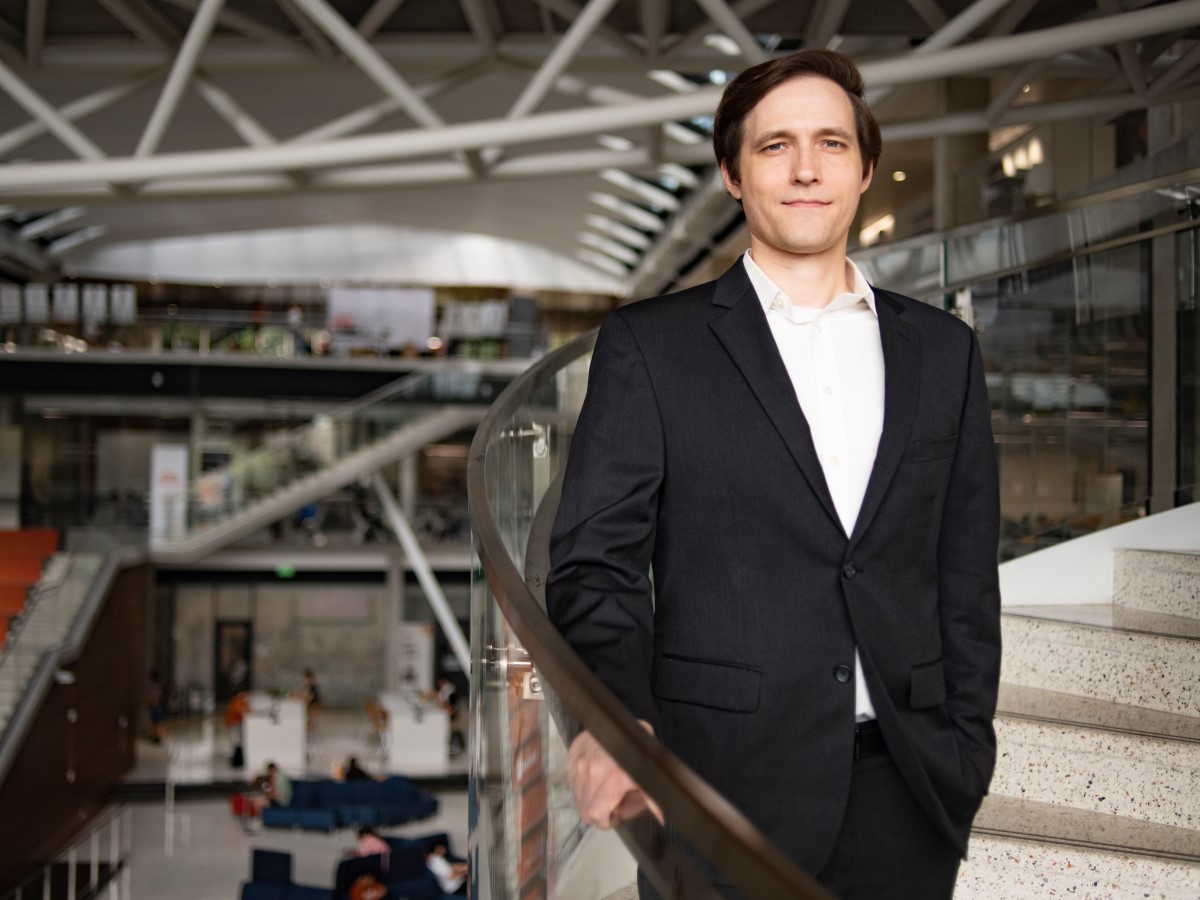A researcher in the Cockrell School of Engineering at The University of Texas at Austin has been selected by the U.S. Department of Defense to lead a Multidisciplinary University Research Initiative (MURI) project to optimize measurements in astronomy, remote sensing and quantum information processing.

David Burghoff, assistant professor in the Cockrell School of Engineering’s Chandra Family Department of Electrical and Computer Engineering
David Burghoff, assistant professor in the Chandra Family Department of Electrical and Computer Engineering, will lead a team that is exploring the capabilities and limits of heterodyne spectroscopy, a method used to analyze the interaction between light and matter. The work could enable a new level of precision in measuring remote stars and planetary formation and speed and location of satellites in low earth orbit.
Burghoff is one of 30 recipients of a MURI award, a highly competitive grant that supports basic defense-related research projects from academic institutions across the U.S. As principal investigator, he will lead researchers from the University of Colorado Boulder, Yale University, University of Central Florida College of Optics and Photonics, University of Southern California and University of Michigan to establish “Precision Radiometry for Incoherent Spectral Measurements (PRISM).” He is one of two assistant professors from this year’s competition who will lead the selected team and project, a significant achievement for an early-career researcher.
The five-year, $9 million effort aims to further fundamental knowledge and development of spatial and spectral resolution technology to detect light sources across a wide range of wavelengths.
“It turns out that those are the key metrics for astronomy,” said Burghoff. “Spatial resolution lets you look at two things that are very close together, or something that’s very small. Whereas, spectral resolution measures something over a broad frequency range into a certain sensitivity level. It is necessary for things like chemical identification and velocity measurements.”
PRISM aims to establish a theoretical framework for the limits of heterodyne spectroscopy and the best possible performance that could be achieved using this technique. Findings during feasibility studies could lead to new protocols to design new quantum-enhanced systems that combine the output of a network of multiple instruments performing multispectral measurements with both high spatial and frequency resolution.
“We have to see what the fundamental limits of performance are for the sensing model. which combines resolution, sensitivity and speed,” said Burghoff. “The team will work together to find the limits and then try to overcome them if possible. I’m excited about the possibility of using these technologies to address some of our most pressing challenges.”
Overseen by AFOSR Program Manager Andrew Stickrath, the MURI award will leverage the team’s interdisciplinary expertise in optical metrology, nanophotonics, astronomy and quantum photonics.
Burghoff joined the Cockrell School last fall. He earned master’s and Ph.D. degrees from the Massachusetts Institute of Technology (MIT) and his bachelor’s degree from the University of Illinois at Urbana-Champaign. After graduating, he continued as a research scientist at MIT and later became an assistant professor at Notre Dame. The overarching theme of his research is the development of new platforms that will allow long-wavelength light to be used in scalable sensors and systems.
Previous awards include the Moore Inventor’s Fellowship (2022), the ONR Young Investigator Program Award (2021), the NSF CAREER Award (2021), and the AFOSR Young Investigator Program Award (2020). He also received MIT’s J.A. Kong Award for Outstanding Electrical Engineering Thesis and the Intelligence Community Postdoctoral Fellowship.
